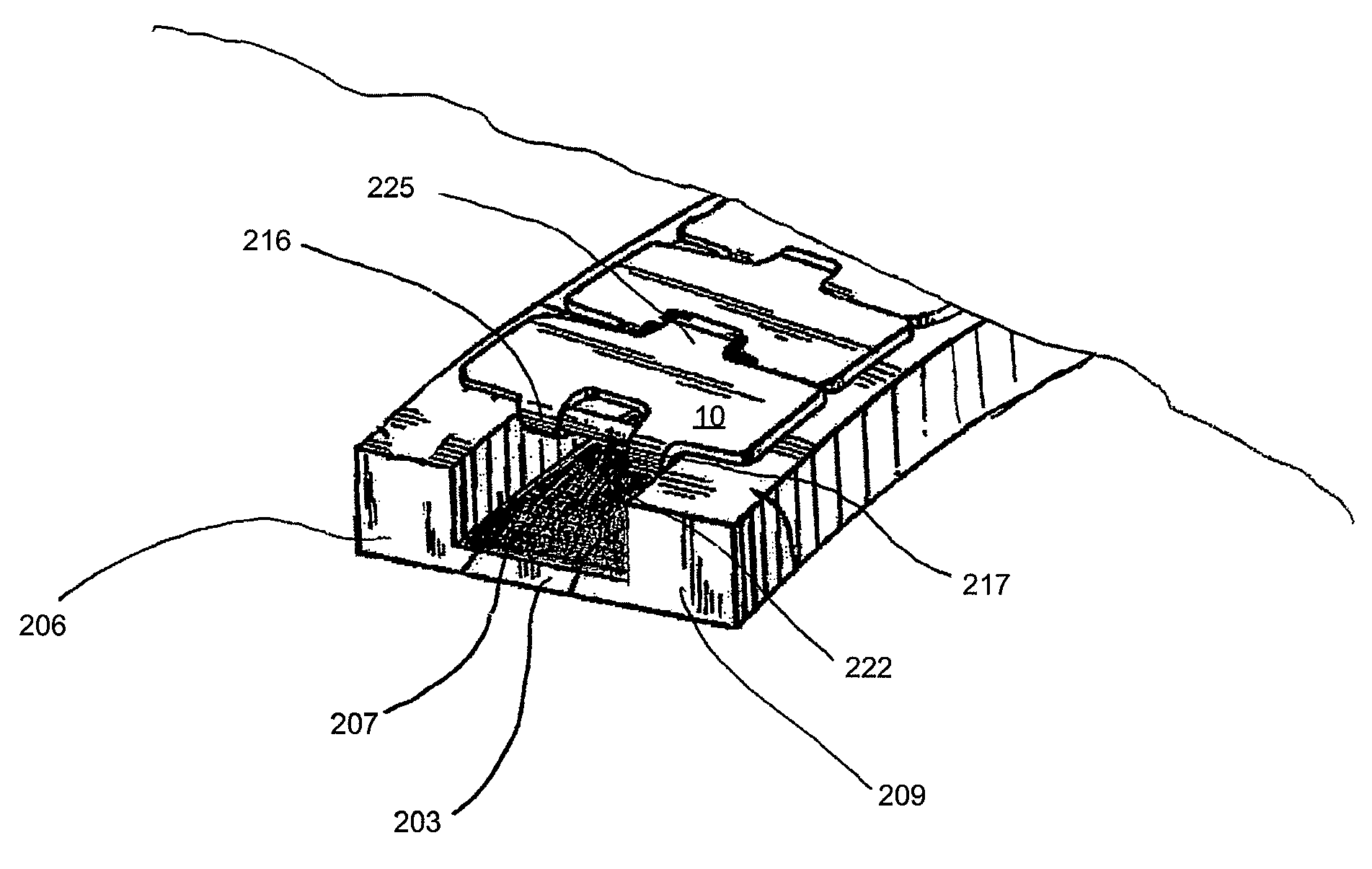Belt module with magnetic properties
a belt module and magnetic technology, applied in the direction of conveyors, conveyor parts, rollers, etc., can solve the problems of high manufacturing cost, shorten the useful life of the chain, and increase the cost of manufacturing, so as to achieve the effect of improving mechanical properties
- Summary
- Abstract
- Description
- Claims
- Application Information
AI Technical Summary
Benefits of technology
Problems solved by technology
Method used
Image
Examples
Embodiment Construction
[0021]FIGS. 1A to 1C show a molding apparatus 110 including a mold 111 for making a module for a modular conveyor belt or chain according to the present invention. The mold 111 for producing the modules 10 includes first and second mating mold halves 111A, 111B forming a mold cavity 116 for receiving a plastic melt from an injection unit 118. The mating mold halves 111A, 111B are mounted on a stationary platen 120 and a moving platen 122, respectively. The stationary platen 120, moving platen 122 and injection unit 118 are supported by a common base 124. The mold 111 includes a sprue channel 126 through the first mold half 111A which is in fluid flow communication with a nozzle 128 on the injection unit 118 when material is injected into mold cavity 116. The nozzle 128 is equipped with a shut-off valve (not shown) of the type that is well known in the art.
[0022]The injection unit 118 has a barrel 130 that includes a feed screw 132 of a configuration that is typical for injection mol...
PUM
| Property | Measurement | Unit |
|---|---|---|
| magnetic | aaaaa | aaaaa |
| magnetic field | aaaaa | aaaaa |
| friction | aaaaa | aaaaa |
Abstract
Description
Claims
Application Information
 Login to View More
Login to View More - R&D
- Intellectual Property
- Life Sciences
- Materials
- Tech Scout
- Unparalleled Data Quality
- Higher Quality Content
- 60% Fewer Hallucinations
Browse by: Latest US Patents, China's latest patents, Technical Efficacy Thesaurus, Application Domain, Technology Topic, Popular Technical Reports.
© 2025 PatSnap. All rights reserved.Legal|Privacy policy|Modern Slavery Act Transparency Statement|Sitemap|About US| Contact US: help@patsnap.com



